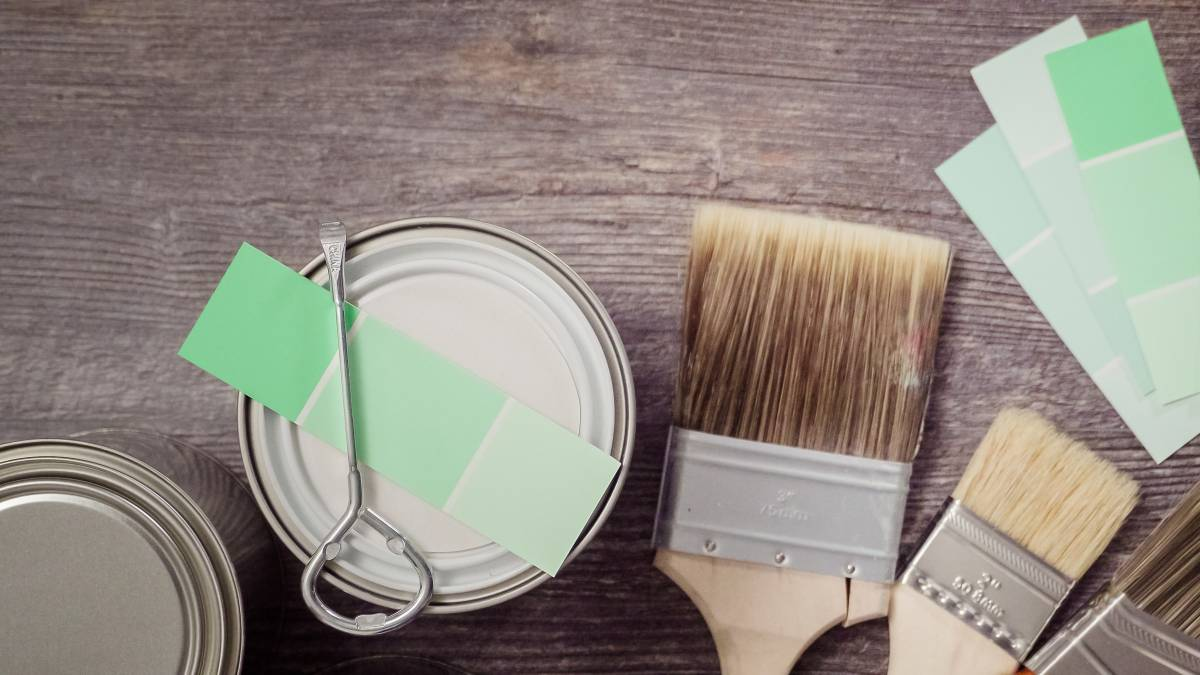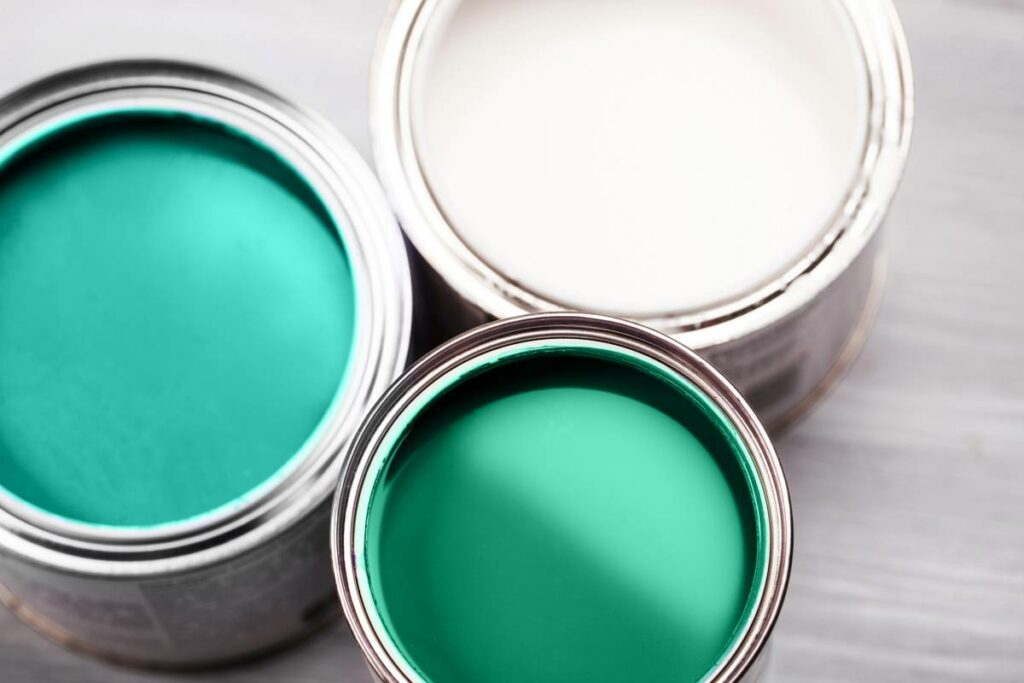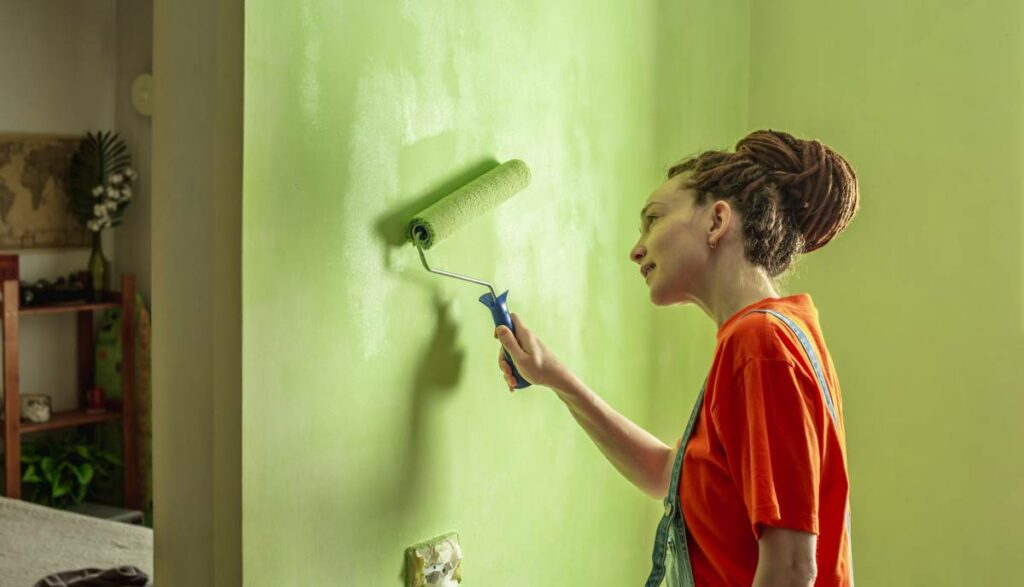
Find a local painter
- Inspiration /
- Indoor projects /
- Design & decor /
- Why you should start...
Why you should start using eco-friendly paints for your home
Upgrade your home with fresh and eco-friendly paint.
Does wet paint make your head spin? There’s a good reason why. Most paints contain volatile organic compounds (VOCs), which can cause headaches and dizziness. These VOCs in paint and other paint products, such as thinners, also contribute to air pollution.
But if VOCs are so bad, why do paints have them at all? The thing is, paint needs VOCs to stay liquid and durable. They also make paint durable enough for high-traffic areas.
Thankfully, science has made it somewhat possible to get new paint jobs done with a lowered risk of harm to one’s health and the planet with eco-friendly paint. Choosing environmentally friendly paint options is an easy way to make your home more sustainable as you integrate it into your renovation projects or even regular home repairs.
What are eco-friendly paints?

Eco-friendly paints are formulated to have little to no VOC content. Unlike traditional paints, which are often oil-based and contain lots of adhesives and chemicals to speed up drying, eco-friendly paints are often water-based. They may contain naturally occurring, biodegradable, and sustainable products like balsam, citrus, and milk proteins.
Eco-friendly house paints should ideally be manufactured sustainably, too. Their material safety data sheet (MSDS) should have a list of the ingredients used so you can check and research the contents and processes.
One thing to note about the “Low VOC” label is that this could be used quite loosely. For example, the base paint may be low in VOCs, but the pigments may contain a high VOC count. So, it’s better to check for third-party certification or approval as well. You can refer to UL Greenguard labels or Green Seal’s standards for VOC content in paint.
Why should you choose eco-friendly paints over traditional paints?

Using eco-friendly, non-toxic paint has numerous benefits for your home and the environment.
Reduced health risks while painting
You or whoever will be painting will benefit from reduced exposure to VOCs. This means less dizziness and headaches as you paint and less risk of developing respiratory infections. If you often struggle with nausea and shortness of breath with traditional paints, your body will thank you for making the eco-friendly switch.
Improved indoor air quality
Traditional paints tend to off-gas VOCs long after the paint has dried, which means that even after you’ve moved into your new home or finished the paint job, you’ll still inhale those fumes! Eco-friendly paint reduces that risk and improves indoor air quality.
Painting a wall sometime soon? Choosing a good paint is just the start of your renovation journey.
Lessened environmental impact
Conventional, high-VOC paints emit greenhouse gases that cause global warming. They are also linked to acid rain and urban smog. When disposed of improperly, they can also add to water pollution.
Since most eco-friendly paints are made using sustainable practices and biodegradable materials, their carbon footprint is less than that of other options. Some companies even use recycled tins to package the paint! Also, depending on your chosen brand, some can even be safely composted without harming plants, animals, soil, or water.
Improved durability and cost-efficiency
Today’s eco-friendly paints have improved durability and a long-lasting finish despite having fewer VOCs. This means you can count on a paint job to last longer–more bang for your buck, less paint used over the years, and a minimised carbon footprint.
Support for the local economy
Eco-friendly and sustainable paint companies typically manufacture and sell locally to reduce carbon emissions from transporting products. Supporting local brands matters to the planet and the local businesses you’re supporting!
Common types of eco-friendly paints
There are a few types of eco-friendly paints available now on the market. Just like conventional paints, they come in various colours for you to choose from. Here are just some of the eco-friendly paint options available and what you need to know about them
Milk paint
Milk paint uses a milk protein called casein and lime. It emits zero VOCs and was a popular choice for painting wooden furniture in colonial America. This is a great choice for interior walls and furniture.
Water-based, non-toxic acrylic paint
Acrylic paints are commonly used for artwork but can also be found in hardware shops. Since some acrylics can contain heavy metals like lead and cobalt, check the label to ensure you get a water-based, non-toxic option.
Mineral, chalk, and clay paint
These paint types are made of naturally occurring substances, making them eco-friendly. Minerals are often used for their pigments, while clay is used as a thickener.
Plant-based paint
These eco-friendly wall paints come from plant-based ingredients such as oils or actual crops. Some manufacturers may even use recycled materials for the packaging to lessen the carbon footprint of the overall production.
Low VOC latex paint
Latex paint is generally more eco-friendly than oil-based paint; it’s best to get cans labelled “low VOC” since formulations may differ. You can check the paint’s materials safety data sheet to compare products.
Zinc phosphate-containing paint
Exterior paint tends to contain more chemicals to help the paint stay on despite weathering. But you can opt for eco-friendly options for these projects, too. Zinc phosphate acts as a fungicide and aids adhesion. It’s also a safer alternative to the more common additive, zinc chromate.
With so many eco-friendly wall paint options available, you can freely take your pick and do your research based on what best suits your home.
4 Tips for choosing eco-friendly paints

1. Choose the right paints for your project
There are interior and exterior paints and paints with different finishes. With so many formulations for eco-friendly paint, there are dozens of brands and varieties.
Need help finding the perfect colour and finish for your project? Here are some tips on how to match paint colour.
2. Research your paints and paint companies
Look into the ingredients, the processes, and the company behind them. Refer to the product’s materials safety data sheet and the company website, and don’t be afraid to ask questions. The more transparent the company is about its products, the better.
3. Look for third-party certifications and seals
Examples are those from the EPA, Good Environmental Choice Australia, The Green Building Council of Australia, Green Seal, and UL Greenguard.
4. Consider the packaging and transportation of the paint, as well as its disposal process
You may opt for brands with recycled or easily recyclable packaging. You could go for local shops to reduce the carbon footprint of transport and shipping. Or, you could look into how eco-friendly the paint is based on how it should be disposed of (e.g. can it be composted or thrown in the rubbish safely?).
Is it better to DIY or hire a professional when painting using eco-friendly paints?
Doing a DIY paint job using eco-friendly paint is not different from using conventional products.
Each type of eco-friendly paint has its own prep method and tips. For example, milk paint application requires mixing the paint powders and bonding agents. Latex paints are good to use straight out of the can, but good-quality materials can help provide more control and better results.
On the other hand, you get efficiency and expertise when hiring a pro. Seasoned house painters are already familiar with different types of surfaces and paints, including eco-friendly paints and their required primers, thinners, or topcoats. They can also help you make better decisions for your renovation projects, such as colour combinations for your living room, the best paint type for a humid room, and how to maintain the paint job afterwards.
Should you decide to hire a pro painter, you can certainly share all that you’ve learned about eco-friendly and non-toxic paints and discuss your questions and suggestions with them.
Choose eco-friendly paints for your next project
Non-toxic paints make renovating your home with less environmental impact and health risks possible. These are benefits you’ll enjoy not only whilst working on your walls but long after the fresh coat of paint has dried.
Now that you’re familiar with the safe alternatives to traditional options, you can take on your next painting project using eco-friendly paints. Whenever in doubt, you can always reach out to professional painters to help with your renovation projects.
FAQs on eco-friendly paints
What is the most eco-friendly paint?
While there is no hard and fast rule for the most environmentally friendly paint, water-based, chalk, and milk paints are considered to have less impact than typical oil-based paints. This is because they emit less VOCs and cause less damage to the environment and our health.
Is eco-friendly paint non-toxic?
Yes, eco-friendly paint is non-toxic. They typically contain ingredients such as water, milk proteins, or plant-based pigments. Acrylic paint can also be considered eco-friendly and non-toxic as long as it doesn’t contain metals like lead and cobalt.
Is eco-friendly paint worth it?
When it comes to calculating the cost of paint versus its impact on your health, the environment, and its long-term durability, eco-friendly paint is worth the extra cost. Conventional oil-based, high-VOC paints have been linked to numerous health issues and environmental concerns, making eco-friendly alternatives a worthy investment.
How much will your job cost?
The Oneflare Cost Guide Centre is your one-stop shop to help you set your budget; from smaller tasks to larger projects.



